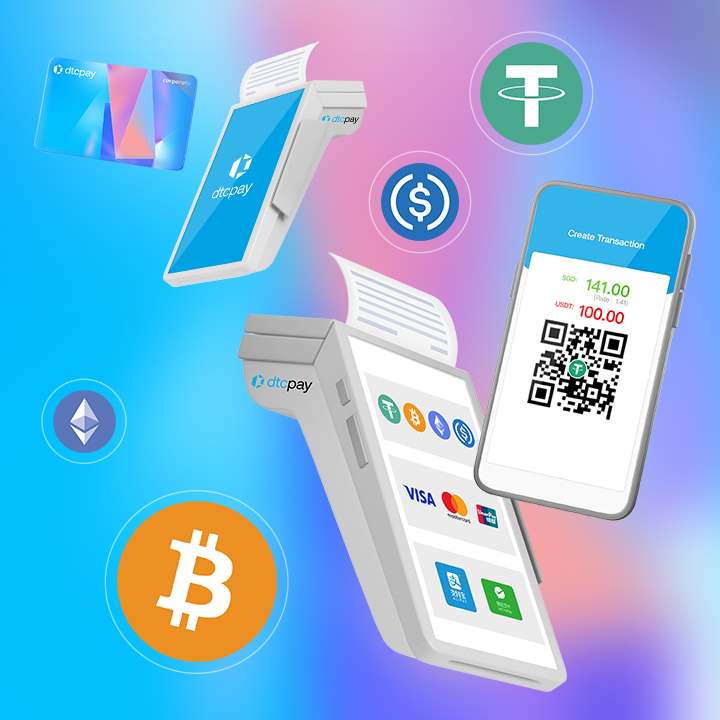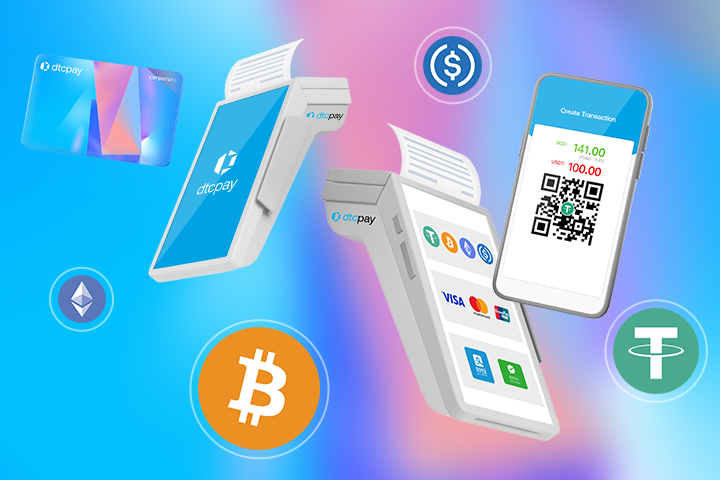Industry Insights
Exploring the Benefits of Crypto and Digital Payments
In today’s digital age, cryptocurrency and digital payments have emerged as powerful alternatives to traditional forms of currency.
3 Jul 2023 • 6 mins Read

Table of Contents
In today’s digital age, cryptocurrency and digital payments have emerged as powerful alternatives to traditional forms of currency. These innovative technologies offer a plethora of benefits that are transforming the way we transact and store value. In this article, we will delve into the world of cryptocurrency and digital payments, exploring their origins, advantages, and real-world applications.
Introduction
Understanding Cryptocurrency and Digital Payments
In order to appreciate the benefits of cryptocurrency and digital payments, it is essential to understand their fundamental concepts.
Cryptocurrency is a digital or virtual form of currency that uses cryptography for secure financial transactions, control the creation of additional units, and verify the transfer of assets. It operates independently of any central bank and is decentralized, offering freedom from government control and interference.
One of the most notable features of cryptocurrency is its use of blockchain technology. Blockchain is a decentralized ledger that records and verifies transactions across multiple computers, ensuring transparency, security, and immutability.
When a transaction is initiated in the cryptocurrency network, it is broadcasted to all the participating computers, known as nodes. These nodes validate the transaction by solving complex mathematical problems, ensuring that the transaction is legitimate and the parties involved have the necessary funds to complete it. Once the transaction is verified, it is added to a block and linked to the previous blocks in the chain, creating a permanent and unalterable record.
Blockchain technology eliminates the need for intermediaries, such as banks, as it allows direct peer-to-peer transactions. This not only reduces transaction costs but also enables faster settlement times, as there is no need to wait for third-party approvals or clearances.
Moreover, the decentralized nature of blockchain ensures that no single entity has control over the network. This makes it resistant to censorship and manipulation, as altering a transaction would require the consensus of the majority of nodes in the network.

What are Digital Payments?
Digital payments, on the other hand, encompass a broader range of technology-driven transactions that facilitate the exchange of money electronically. They include various forms such as electronic fund transfers, mobile payments, and online wallet systems.
Electronic fund transfers (EFT) allow individuals and businesses to transfer money from one bank account to another without the need for physical cash. This can be done through online banking platforms, mobile apps, or even by using a debit or credit card at a point of sale.
Mobile payments have gained significant popularity in recent years, with the widespread adoption of smartphones. These payments can be made by scanning QR codes, using near-field communication (NFC) technology, or through mobile banking apps. The convenience of mobile payments enables users to make transactions on the go, without the need for physical cards or cash.
Online wallet systems, also known as e-wallets, are digital platforms that allow users to store, manage, and transact with their money electronically. These wallets can be linked to bank accounts or loaded with funds from various sources, providing a secure and convenient way to make online purchases or transfer money to other individuals.
Unlike traditional cash transactions, digital payments rely on electronic devices and networks. They offer convenience, speed, and efficiency, making monetary transactions seamless and hassle-free.
Furthermore, digital payments contribute to financial inclusion by providing access to financial services for individuals who may not have access to traditional banking systems. This is particularly beneficial in developing countries where a significant portion of the population remains unbanked.
In conclusion, understanding the concepts of cryptocurrency and digital payments is crucial in today’s digital age. Cryptocurrency revolutionizes the way we perceive and use money, offering a decentralized and secure alternative to traditional financial systems. Digital payments, on the other hand, provide convenience and efficiency, making monetary transactions faster and more accessible. As technology continues to evolve, it is important to stay informed about these advancements and embrace the opportunities they bring.
The Evolution of Digital Payments
The history of digital payments can be traced back to the earliest forms of electronic fund transfers. Let’s explore the journey that has led us to the current era of cryptocurrency and digital payments.
In the 1970s, electronic funds transfer (EFT) emerged as the first form of digital payment. It allowed the transfer of funds between financial institutions and paved the way for the development of online banking. This innovation revolutionized the way people managed their finances, providing a faster and more convenient way to transfer money.
However, it was not until the 1950s that the introduction of credit cards truly transformed the way we make payments. Credit cards provided a secure and convenient way to transact without the need for physical cash. This breakthrough allowed people to make purchases and pay for services with ease, significantly reducing the reliance on carrying large amounts of cash.
With the advent of the internet in the 1990s, online payment systems started to emerge. Companies like PayPal and Google Wallet revolutionized the way people made payments for goods and services online. These platforms provided a secure and convenient way to transfer money electronically, opening up new possibilities for e-commerce and online transactions.
The Rise of Cryptocurrency
In 2009, cryptocurrency burst onto the scene with the introduction of Bitcoin, the first decentralized digital currency. Bitcoin’s revolutionary blockchain technology and its promise of secure, peer-to-peer transactions created a wave of excitement and interest. It offered an alternative to traditional banking systems, allowing users to have full control over their finances without the need for intermediaries.
Since then, numerous cryptocurrencies have emerged, each offering its unique features and benefits. Ethereum, for example, introduced smart contracts, enabling developers to build decentralized applications on its blockchain. Ripple focused on facilitating fast and low-cost international money transfers, while Litecoin aimed to improve upon Bitcoin’s transaction speed and scalability.
The rise of cryptocurrency has not only transformed the way we think about money but also opened up new opportunities for innovation and financial inclusion. It has challenged traditional banking systems and sparked discussions about the future of money and the role of central banks.
As digital payments continue to evolve, we can expect to see further advancements in technology and the emergence of new payment solutions. From mobile payments to biometric authentication, the possibilities are endless. The future of digital payments holds great promise, offering convenience, security, and financial empowerment to individuals and businesses around the world.
The Benefits of Digital Payments
While cryptocurrency offers a unique set of advantages, digital payments as a whole bring numerous benefits to individuals and businesses alike.
Convenience and Speed
Digital payments offer unparalleled convenience and speed. With just a few taps on a mobile device or clicks on a computer, transactions can be completed within seconds, eliminating the need for manual paperwork or physical visits to banks. Additionally, digital wallets and payment platforms combine multiple payment methods and streamline the entire payment process, making it easier than ever to transact.
Reduced Costs and Increased Efficiency
Digital payments significantly reduce transaction costs compared to traditional payment methods. They eliminate the need for physical infrastructure, paperwork, and intermediaries, thereby lowering operational expenses for both buyers and sellers. Moreover, digital payments allow businesses to automate payment processes, reducing the time and effort required to reconcile transactions and manage cash flow.
Enhanced Tracking and Control
Traditional payment methods often lack transparency, making it challenging to track transactions and detect fraudulent activities. In contrast, digital payments provide a clear trail of transaction history, allowing for easy auditing and enhanced security. Businesses can also implement robust financial management systems that provide real-time insights, enabling better control over their financial activities.
Real-world Applications of Crypto and Digital Payments
Cryptocurrency and digital payments have gained significant traction in various sectors, transforming the way we transact and interact with money.
Cryptocurrency in E-commerce
The rise of e-commerce has been fueled by the acceptance of cryptocurrencies as a legitimate form of payment. Major platforms and online retailers now offer the option to pay with crypto, providing users with more flexibility and privacy. For international transactions, cryptocurrencies also eliminate the need for currency conversions, simplifying the payment process and reducing fees.
Digital Payments in Everyday Life
In our everyday lives, digital payments have become the norm. From contactless payments using devices like smartphones and smartwatches to peer-to-peer payment apps, the convenience of digital payments has revolutionized the way we shop, dine, and split bills.
Furthermore, digital payment platforms and mobile wallets have empowered individuals to manage their finances efficiently, track expenses, and create budgets.
In conclusion, cryptocurrency and digital payments offer a wide range of benefits that are reshaping the global financial landscape. From enhanced security and accessibility to convenience and speed, these technologies have the potential to revolutionize the way we transact and store value. As they continue to evolve, the possibilities for their adoption in various industries are limitless. By embracing cryptocurrency and digital payments, individuals and businesses can unlock a world of financial possibilities.















